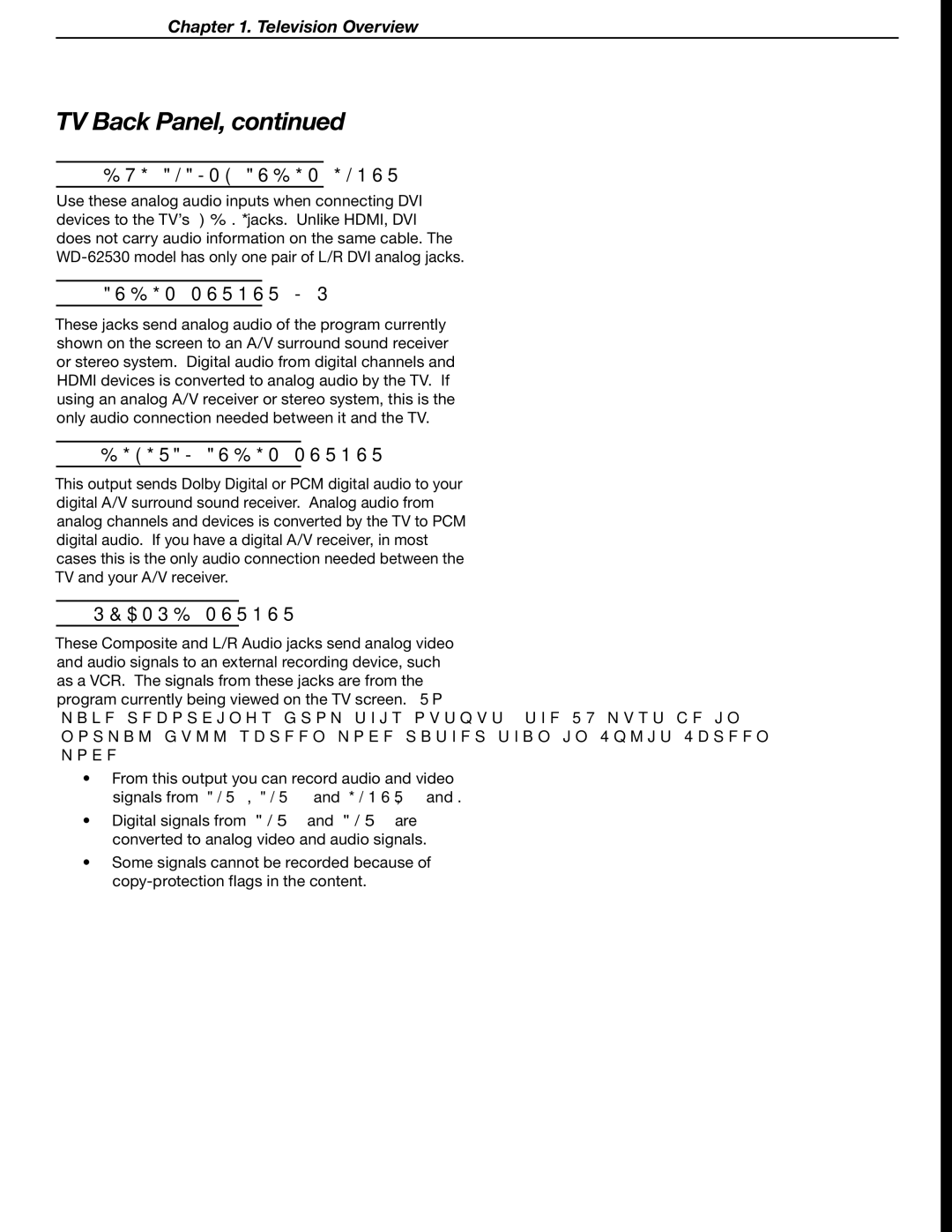
18Chapter 1. Television Overview
TV Back Panel, continued
5. DVI ANALOG AUDIO INPUT
Use these analog audio inputs when connecting DVI devices to the TV’s HDMI jacks. Unlike HDMI, DVI does not carry audio information on the same cable. The
6. AUDIO OUTPUT L/R
These jacks send analog audio of the program currently shown on the screen to an A/V surround sound receiver or stereo system. Digital audio from digital channels and HDMI devices is converted to analog audio by the TV. If using an analog A/V receiver or stereo system, this is the only audio connection needed between it and the TV.
7. DIGITAL AUDIO OUTPUT
This output sends Dolby Digital or PCM digital audio to your digital A/V surround sound receiver. Analog audio from analog channels and devices is converted by the TV to PCM digital audio. If you have a digital A/V receiver, in most cases this is the only audio connection needed between the TV and your A/V receiver.
8. RECORD OUTPUT
These Composite and L/R Audio jacks send analog video and audio signals to an external recording device, such as a VCR. The signals from these jacks are from the program currently being viewed on the TV screen. To make recordings from this output, the TV must be in normal
•From this output you can record audio and video signals from ANT 1, ANT 2 and INPUT 1, 2 and 3.
•Digital signals from ANT 1 and ANT 2 are converted to analog video and audio signals.
•Some signals cannot be recorded because of
